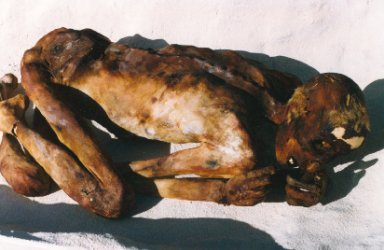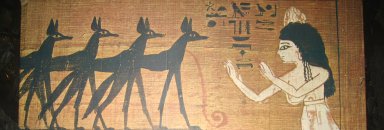
Mummy Facts
 The oldest known mummy is thought to be Ginger – a predynastic sun-dried mummy. He was buried at Geblein about 3200 BCE. His dead body was perfectly dried and preserved by the action of hot dry sand. The sand absorbed the moisture from the body which accounts for about 75% of the weight of the dead human body thereby preventing bacteria to breed and cause decay.
The oldest known mummy is thought to be Ginger – a predynastic sun-dried mummy. He was buried at Geblein about 3200 BCE. His dead body was perfectly dried and preserved by the action of hot dry sand. The sand absorbed the moisture from the body which accounts for about 75% of the weight of the dead human body thereby preventing bacteria to breed and cause decay.
There is a strange story that has surrounded Ginger for many years. The story goes that during the 19th Century the British Museum let it be known that it badly wanted a Predvnastic burial to exhibit. This need for a mummy was dutifully filled by a rather notorious Egyptian antiques dealer, one of whose relations disappeared in mysterious circumstances and whose size and features are said to have remarkable similarity with those of Ginger...
The practice of mummifying the dead was not restricted to humans. The Egyptians turned their skills to mummify animals as well. The animal chosen, usually in vast numbers, were the animals whose form was assumed by the gods, such as Bastet - cat, Sobek – crocodile (sometimes transcribed as Sebek), Thoth - ibis, etc. These were mummified in huge numbers and buried within the confines of temples dedicated to them.
The massive stone sarcophagus of pharaoh Seti was acquired in the 19th century by Sir John Soane, and is still on show at Sir John's house at Lincoln Inn Fields which is now a museum. The mummy, however, is being kept in the Egyptian Museum, Cairo.
The chief embalmer in Ancient Egypt - the person who was responsible for the proper mummification - usually wore a mask of Anubis while carrying out the main ceremonies.


intro | home | egyptian mummies
shop | mummification process | mummy facts
egyptian amulets | mummy links|egyptian mummies exhibition
| egyptian mummy pictures | find us